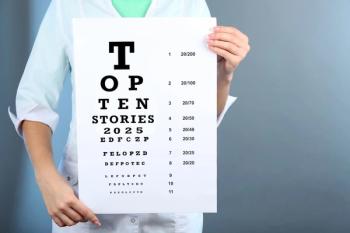
Scuba divers and surfers face dual light exposure that may accelerate AMD
Key Takeaways
- Surfers and divers face unique ocular risks from UVA and BL exposure, potentially contributing to AMD development.
- Water sport participants are underrepresented in ophthalmic research, despite known UV and BL effects on ocular tissues.
Australian researchers highlighted the overlooked ocular risks surfers and divers face from UV and blue light exposure.
Australian researchers have focused their attention on an underrepresented group in ophthalmic research: surfers and divers, who face dual exposures to UV and blue light (BL), and how those exposures impact the development of
When they conducted a literature search on ocular UV and BL exposure among water sport participants, no eligible human studies were identified.
Beaver and Hudson are from Bond University Faculty of Health Sciences and Medicine, Gold Coast, Queensland, Australia. In addition, Beaver is associated with the Clem Jones Centre for Regenerative Medicine, Gold Coast, and Hudson with Bond University, Bond Business School, Gold Coast, and the University of New England, Faculty of Medicine and Health, in Armidale, New South Wales, Australia.
Two-pronged risk
The investigators explained that there is “firstly, direct solar radiation at the [water’s] surface, intensified by the reflective properties of the ocean, and secondly, subsurface BL exposure during diving, where the UV light is largely filtered but BL penetrates deeply and may contribute to cumulative retinal stress. Scuba divers spend hours in environments in which BL dominates their visual field, and the majority wear equipment that is unable to filter BL. Surfers may receive higher UV exposure due to both duration and angle of incidence, with the ocean acting as a mirror.” They expressed their views in a commentary in Eye.
Some study data have been published previously on the adverse effects of UV radiation and BL on ocular tissues, including pterygium, photokeratitis, and AMD.2-4 UV radiation comprises wavelengths UVA, UVB, and UVC that range from 100 to 400 nm, and BL is the high-energy visible (HEV) portion of the visible spectrum between 400 and 500 nm.5
“Research has established the risk to ocular health in outdoor workers, welders, and those living in high UV-index regions, affecting the anterior part of the eye and potentially the retina.6-8 However, populations whose exposure is mediated through water (surfers, scuba divers) remain underrepresented in ophthalmic research,” they said.
An interesting component of this research topic is that the sunlight at sea behaves differently from that on land. “The ocean’s surface can reflect between 10% and 30% of incident UV radiation and even more HEV light under certain angles of incidence and atmospheric conditions.9 The refractive properties of water can direct upward-scattered light toward the anterior surface of the eye, increasing the irradiance received by the cornea and lens. For surfers who spend hours gazing toward the horizon and divers who spend extended durations beneath the surface where BL penetrates depths (<40 m), the cumulative exposure may not be trivial,” the researchers explained.
Ocular effects of cumulative exposure
There are potential consequences to the cumulative exposure to the 2 wavelengths that are biologically plausible and clinically relevant, according to the investigators. “UVB radiation has been implicated in pterygium and photokeratitis,10 while both UVA and BL are increasingly associated with cataractogenesis and AMD,"11,12 they said.
The lens is particularly susceptible to damage from UV radiation reflected off water, sand, and snow.13 While UVB is mostly absorbed by the cornea and lens, UVA and visible BL can reach the retina.14
Chronic exposure to HEV light has been implicated in oxidative stress, photoreceptor damage, and retinal pigment epithelium dysfunction.15,16 This is particularly relevant for individuals with minimal ocular protection and in areas with prolonged exposure in high UV-index zones, such as in Australia, Hawaii, and Southeast Asia.
The authors argued about the presence of a “potential blind spot” in the current understanding of the environmental impact on ocular health and called for “interdisciplinary efforts to integrate ophthalmology, environmental optics, and sports medicine to evaluate the nature and magnitude of risk in this population.” They also underscored the need for the development of targeted protective interventions, such as UV/BL-filtering masks, surf-appropriate eyewear, and/or behavioral recommendations.
The authors suggested that the difficulties quantifying ocular irradiance in aquatic environments; lack of interdisciplinary collaboration between ophthalmologists, ocular scientists, and marine or sports health researchers; and less interest in light exposure in recreational vs occupational settings may be responsible for the few published studies. However, wearable radiometry and ocular imaging tools now offer practical methods that could help to address these gaps, the authors emphasized.
Future research
The authors proposed the following directions for research:
- Development of innovative tools to measure ocular irradiance in water sport participants.
- Observational studies to assess degenerative eye conditions such as AMD across age groups in water sport participants.
- Observational studies to identify the correlates and determinants of ocular conditions in young, middle-aged, and older water sport participants, including large-scale surveys and secondary analyses of existing health survey data.
- Retinal imaging studies comparing water sport participants to nonexposed controls, assessing cumulative exposure risk by age.
Commenting on this topic, Beaver and Hudson said, “The current absence of data on ocular UV and BL exposure in water sport participants should not be interpreted as evidence of negligible risk. Rather, it may highlight a gap in our understanding of environmental contributors to ocular disease. Given the intensifying effects of climate change and ozone fluctuation on UV exposure, individuals engaged in prolonged aquatic activities may face underrecognized ocular risks. We encourage research communities to systematically evaluate these issues using best-practice, high-quality research approaches. Proactive investigation now may help to inform preventive strategies and mitigate long-term visual morbidity in these environmentally exposed groups.”
References
Beaver D, Hudson C. Are surfers and scuba divers an overlooked at-risk group for age-related macular degeneration? Eye. Published online July 21, 2025.
https://doi.org/10.1038/s41433-025-03941-9 Cougnard-Gregoire A, Merle BMJ, Aslam T, et al. Blue light exposure: ocular hazards and prevention—a narrative review. Ophthalmol Ther. 2023;12(2):755-788.
Sui GY, Liu GC, Liu GY, et al. Is sunlight exposure a risk factor for age-related macular degeneration? a systematic review and meta-analysis. Br J Ophthalmol. 2013;97(4):389-394.
Vojniković B, Njirić S, Čoklo M, Španjol J. Ultraviolet sun radiation and incidence of age-related macular degeneration on Croatian Island Rab. Coll Antropol. 2007;31(suppl 1):43-44.
Zhao ZC, Zhou Y, Tan G, Li J. Research progress about the effect and prevention of blue light on eyes. Int J Ophthalmol. 2018;11(12):1999-2003.
Begaj T, Schaal S. Sunlight and ultraviolet radiation—pertinent retinal implications and current management. Surv Ophthalmol. 2018;63(2):174-192.
Kim MS, Lee SG, Kim JY, Kang MY. Maculopathy from an accidental exposure to welding arc. BMJ Case Rep. 2019;12(2):bcr-2018-227677. doi:
10.1136/bcr-2018-227677 Modenese A, Gobba F. Occupational exposure to solar radiation at different latitudes and pterygium: a systematic review of the last 10 years of scientific literature. Int J Environ Res Public Health. 2017;15(1):37.
Yu J, Hua H, Liu Y, Liu Y. Distributions of direct, reflected, and diffuse irradiance for ocular UV exposure at different solar elevation angles. PLoS One. 2016;11(11):e0166729.
Chun YH, Paik JS, Oh JH, Kim HS, Na KS. Association between pterygium, sun exposure, and serum 25-hydroxyvitamin in a nationally representative sample of Korean adults. Lipids Health Dis. 2018;17(1):260.
Chalam K, Khetpal V, Rusovici R, Balaiya S. A review: role of ultraviolet radiation in age-related macular degeneration. Eye Contact Lens. 2011;37(4):225-232.
Roberts JE. Ultraviolet radiation as a risk factor for cataract and macular degeneration. Eye Contact Lens. 2011;37(4):246-249.
Protecting your eyes from the sun’s UV light. National Eye Institute. July 5, 2022. Accessed July 24, 2025. https://www.nei.nih.gov/about/news-and-events/news/protecting-your-eyes-suns-uv-light
Hammond BR Jr, Renzi-Hammond L. Individual variation in the transmission of UVB radiation in the young adult eye. PLoS One. 2018;13(7):e0199940.
Chakravarthy H, Georgyev V, Wagen C, Hosseini A, Matsubara J. Blue light-induced phototoxicity in retinal cells: implications in age-related macular degeneration. Front Aging Neurosci. 2024;16:1509434.
Pang J, Seko Y, Tokoro T. Processes of blue light–induced damage to retinal pigment epithelial cells lacking phagosomes. Jpn J Ophthalmol. 1999;43(2):103-108.
Newsletter
Don’t miss out—get Ophthalmology Times updates on the latest clinical advancements and expert interviews, straight to your inbox.





